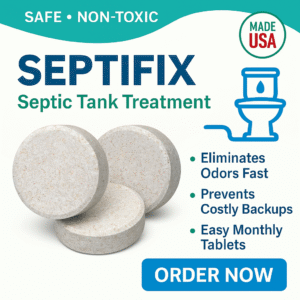If you’ve been browsing toilets at Lowe’s, there’s a good chance you’ve come across Project Source. They’re hard to miss—stacked high, priced low, and marketed as an easy, budget-friendly choice. But here’s the deal: is that low price tag hiding bigger problems down the line?
This guide walks you through real-world reviews, expert analysis, and common issues—so you can decide if a Project Source toilet is truly worth it, or if you’re better off spending a little more now to save a lot of frustration later.
What Exactly Is Project Source?
Project Source is Lowe’s private-label line of home improvement essentials. You’ll see their name on everything from cabinet hardware to light fixtures—and yes, toilets. These are built to be functional, no-frills, and priced well below top-tier brands like TOTO, Kohler, or American Standard.
They often come in under $150, with models like:
- Pro-Flush Dual Flush Toilet
- Standard Round-Front Two-Piece Toilet
- Danville High-Efficiency Toilet
They all claim to meet basic standards: WaterSense certification, efficient flush rates, and simple installation. But that doesn’t always mean performance or reliability matches what’s on the box.
What Are Real Buyers Saying?
On the surface, many buyers are happy with their purchase—especially in the first few months. They appreciate how easy these toilets are to install and the fact that they’re budget-friendly. But when you start digging into longer-term reviews and plumbing forums, a different picture starts to emerge.
✅ Common Praise:
- Simple Installation: Most models are light and straightforward, even for beginners.
- Price Point: If you’re flipping a home or on a strict budget, the cost is hard to beat.
- Works “well enough” for light use: Some buyers install them in guest baths or basements with minimal issues.
One reviewer wrote: “Perfect for my rental. I didn’t want to spend more than $150 and this went in without a fuss.”
⚠️ Common Complaints:
- Flush isn’t strong enough: Many say it doesn’t always clear the bowl, especially with solid waste.
- Frequent clogging: Narrow trapways and smaller water surface area make them more prone to clogs.
- Plastic parts wear out: Fill valves, flappers, and seats often fail early.
- Build quality feels cheap: Several users report misaligned tanks, uneven glazing, or wobbly bases.
- Warranty support is inconsistent: Getting replacement parts or service can be hit-or-miss.
One Reddit user said it plainly: “I install these when a landlord asks for something cheap. I warn them that in 6 months, they’ll probably regret it.”
Flush Power: Looks Can Be Deceiving
Project Source toilets often list dual-flush capability (usually 1.1/1.6 gallons per flush). While that sounds efficient, many users find that the low-flow mode isn’t enough—and the high-flow option still struggles with solid waste.
According to some plumbing pros, this is due to poorly engineered internal pathways and undersized trapways, which reduce siphon power and waste-clearing effectiveness. The result? You’re flushing twice more often than you’d like—and possibly reaching for the plunger, too.
So while the specs sound modern, the real-life performance doesn’t always hold up.
Long-Term Durability: Will It Last?
This is where Project Source toilets start to fall short. Reviews show a pattern: early satisfaction, followed by gradual disappointment. Common breakdowns include:
- Loose or broken flush handles
- Leaky fill valves
- Worn or warped flappers that cause ghost flushing
In many cases, buyers say they ended up replacing parts—or the entire toilet—within a year or two. That undercuts the original savings and turns a “cheap fix” into a frustrating maintenance cycle.
Who Is It Actually Good For?
To be fair, Project Source toilets have a place. They’re not all junk, and for certain buyers, they might be the right fit.
👍 Best for:
- Rental properties where aesthetics and longevity aren’t critical
- Guest bathrooms with minimal use
- Temporary installs or house flips
- DIYers on a tight timeline or strict budget
👎 Not ideal for:
- Homes with kids or high-traffic bathrooms
- Anyone looking for long-term reliability
- Buyers who want strong flush performance
- Installations in upper-floor bathrooms where leaks could cause real damage
How It Compares to Big Brands
If you’re thinking about spending just a bit more, you’ll find that upgrading to a well-known brand gives you:
- Stronger, cleaner flushes (less chance of needing a second flush)
- Better glaze quality (less staining and fewer clogs)
- Stronger warranties and parts support
- More comfortable seating height and bowl design
Top Alternatives:
- TOTO Entrada: Excellent gravity flush, solid reputation, and very quiet
- American Standard Cadet 3: Powerful flushing with wide trapway and EverClean surface
- Kohler Cimarron: Water-efficient and backed by long-term support
These models often start at $200–$300—but they tend to last longer, perform better, and feel like a quality upgrade. Over time, you may save money by avoiding repairs or replacements.
Bottom Line: Worth It or Walk Away?
Project Source toilets aren’t completely terrible. If you go in with the right expectations—they’re short-term, budget-friendly, and not built for heavy use—they can absolutely serve a purpose. But if you’re expecting solid performance or a stress-free flush every time, you’ll probably be disappointed.
They’re best used as a stopgap, not a long-term investment.
Final Recommendation
If you’re outfitting a rental or need a cheap, immediate solution, Project Source may be fine. But for your main bathroom—or any space that gets regular traffic—consider upgrading to something more reliable. The extra $75–$100 you spend now could save you multiple hours of plunging, replacing parts, or calling a plumber later.
Still not sure? Take measurements of your rough-in and check reviews on Lowe’s, Reddit, or plumbing forums before making a choice. It’s a toilet—you’ll be living with it for a while. Might as well get one that does its job quietly and completely every time.
